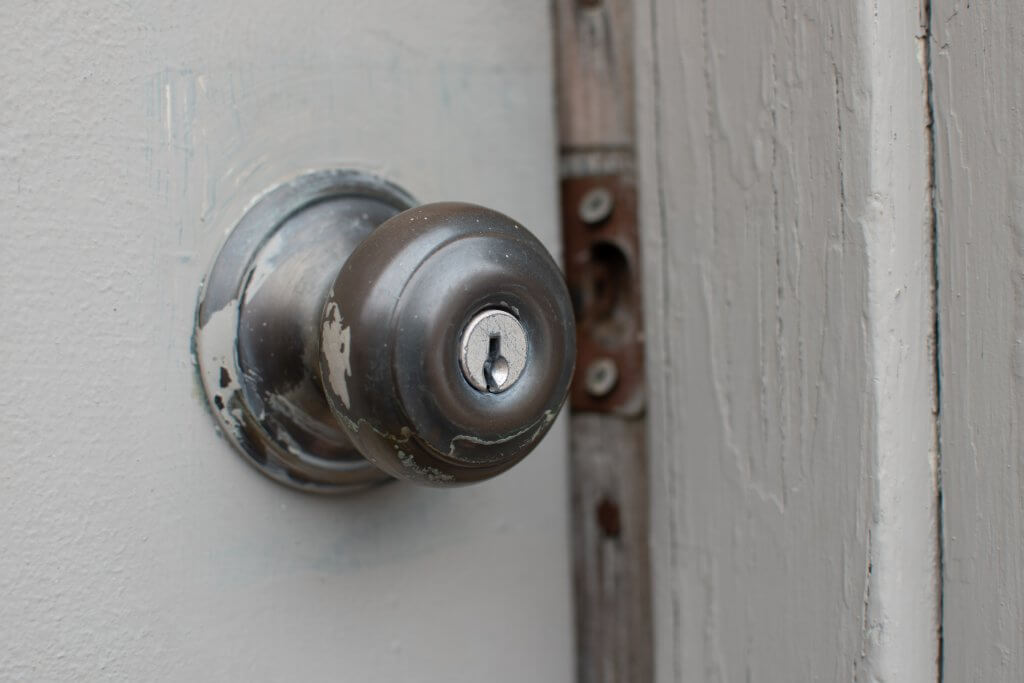
You’re closing up your building for the day, and you’re the last one out. You close the door, but as you reach into your pocket to grab your keys, the door swings back open. You try to close it again, but no matter what you do, you can’t seem to get the door to latch.
When your door won’t stay latched, it can be frustrating. You know that you can’t leave your doors unlatched. According to the Office for the Victims of Crimes, most non-residential burglaries take place at night. Your building is more vulnerable if you can’t secure your doors.
So what do you do if your building doors just won’t latch? In this guide, we’ll explore the most common reasons why building doors won’t latch and what you can do to try to solve the problem.
Reasons Your Door Won’t Latch
When your door won’t latch, the problem might be that the catch plate that came with your commercial door lockset no longer lines up with the retractable latch that sticks out of the side of your door. When that happens, the latch won’t catch and the door will be easily pushed open.
There might be a number of reasons why the latch no longer lines up with the catch plate. Over time, every building experiences some degree of settling, as the various construction materials shift in response to slight tremors, building stress, and areas in which the foundation may have shifted. When this happens, the door frame can shift position, causing your door to come out of alignment.
There are other factors, as well. Cheap wooden doors can warp or swell, especially if your commercial wood door does not have a solid core. You may also find that parts like hinges can come loose. Other times, the problem might be with the lockset itself, especially if the latch no longer fully retracts.
How to Fix the Problem
No matter what the reason may be, when your door won’t latch, you need to fix the problem quickly. There are some temporary fixes you can use, which may solve the problem for a short period of time.
You may be able to lift the door as you close it, for instance, to get the latch to engage. You may find that a deadbolt will still close your door, even if the catch will not. In a pinch, you could even find a way to temporarily chain or otherwise mechanically lock the door.
These last two strategies, though, are not acceptable for some doors, especially if they’re considered to be fire exits. Locking these doors during business hours is illegal, and it presents a significant risk of harm to both customers and employees alike.
The most permanent solution is to try to repair the door. In most cases, you may be able to solve the problem in less than an hour.
The first step is to check all of the hardware on your door, including the lockset, the catch plate, and the hinges, as well as any door closers that may be installed. This might solve the problem, especially if the door was hitting the side of the frame.
If that doesn’t fix the problem, the next step is to check the latch. Put something like lipstick or paint on the latch, then close the door. Once you open it, you should be able to see where the latch is hitting on the catch plate.
You can then adjust the opening in your catch plate to line up with the door latch. In wood frames, you may be able to move the catch plate up or down in the frame, drilling out the space behind it. In a metal frame door, you may need to use a file to enlarge the opening in order to get it to engage with the latch.
Start Off with Quality
Installing top-quality doors and hardware is the best way to avoid running into problems. If you’re interested in learning more about the products we have to offer, contact our team at CDF Distributors, and we’ll help you find the right door package for your building.
July 12, 2021
Wayne Foreman